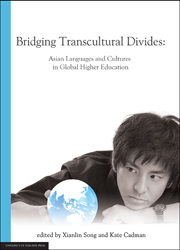Book contents
- Frontmatter
- Contents
- Acknowledgements
- List of Contributors
- Foreword
- Part I Another pedagogy is possible
- Part II Re-locating teaching and learning
- Part III Transforming curriculum in Asian language teaching
- 4 Teaching Asian languages from an intercultural perspective: Building bridges for and with students of Indonesian
- 5 A Study Skills Action Plan: Integrating self-regulated learning in a diverse higher education context
- 6 The challenge of motivation: Teaching Japanese kanji characters to students from diverse language backgrounds
- 7 Personal growth through intercultural communication: Engaging native speakers and reflective learning in Japanese language curriculum
- Part IV Capitalising on Asian social and cultural studies in contexts of diversity
- Part V Bridging learning gaps
6 - The challenge of motivation: Teaching Japanese kanji characters to students from diverse language backgrounds
from Part III - Transforming curriculum in Asian language teaching
Published online by Cambridge University Press: 05 June 2013
- Frontmatter
- Contents
- Acknowledgements
- List of Contributors
- Foreword
- Part I Another pedagogy is possible
- Part II Re-locating teaching and learning
- Part III Transforming curriculum in Asian language teaching
- 4 Teaching Asian languages from an intercultural perspective: Building bridges for and with students of Indonesian
- 5 A Study Skills Action Plan: Integrating self-regulated learning in a diverse higher education context
- 6 The challenge of motivation: Teaching Japanese kanji characters to students from diverse language backgrounds
- 7 Personal growth through intercultural communication: Engaging native speakers and reflective learning in Japanese language curriculum
- Part IV Capitalising on Asian social and cultural studies in contexts of diversity
- Part V Bridging learning gaps
Summary
Introduction
Globalisation has increased the number of international students in many countries and the process is still going on. The number of enrolments by international students in Australian educational institutions is also increasing year by year and the majority of enrolments in Australia are in higher education (Gillard 2009). From 2002 to 2009, the top five sources of these enrolments each year have been from Asian countries and the top country has been China (Australian Education International, 2002, 2003, 2004, 2005, 2006, 2007, 2008, 2009). These huge inflows of diverse students have affected Japanese language programs in Australian universities, which have experienced greatly increased enrolments of international students, particularly Chinese-background students from China, Taiwan, Hong Kong and Singapore. As a result, academic staff in Australia are now extremely challenged by their responsibility for satisfying the learning experiences not only of local students but also often of large numbers of international students.
However, for most of the programs established to teach Japanese as a foreign language in Australian higher education, program structures, courses and curricula have been designed to meet the needs of Australian society and Australian students who have English as their first language. Now, in many Japanese courses there are not only Australian students but also international students from countries where high Japanese competence is needed for study, work and cultural exchange — and where this need is more pressing than in Australia.
- Type
- Chapter
- Information
- Bridging Transcultural DividesAsian Languages and Cultures in Global Higher Education, pp. 131 - 154Publisher: The University of Adelaide PressPrint publication year: 2012



